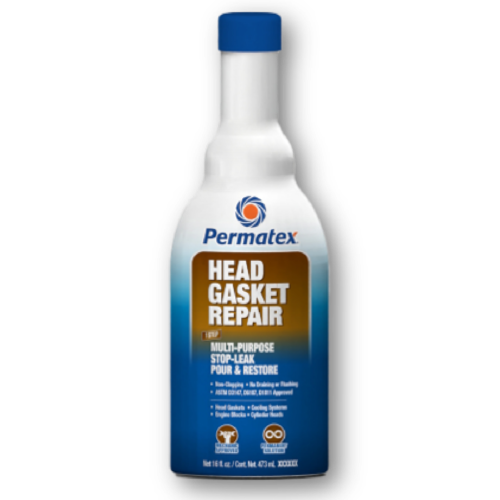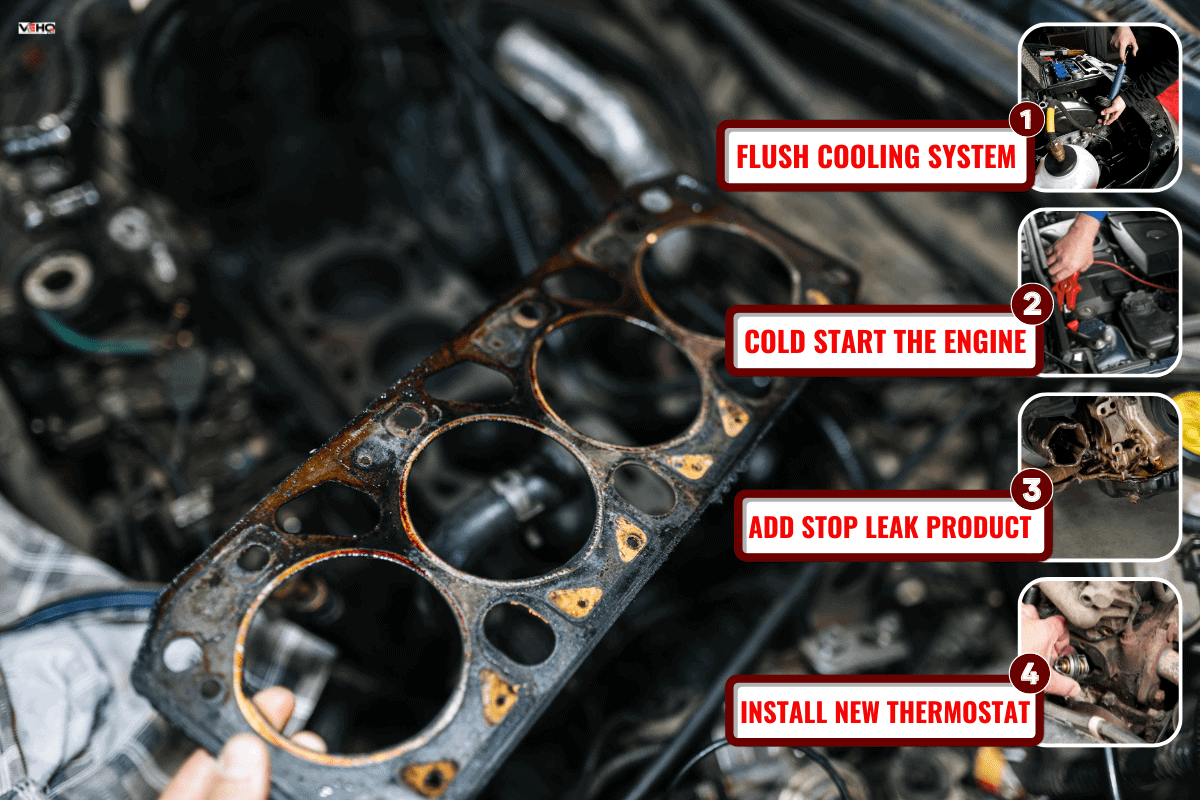Let’s cut to the chase, folks. If you’ve been hearing strange noises from under your hood or noticing that your car’s performance is dropping like a rock, there’s a good chance your head gasket might be on the fritz. And when it comes to fixing this issue, head gasket stop leak solutions are often the first thing that pops into mind. But is it really worth it? And what exactly are we dealing with here? Let’s break it down.
Now, before we dive headfirst into the deep end, let’s take a moment to understand what a head gasket is and why it’s so important. Think of it as the unsung hero of your engine. It’s a little piece of metal or composite material that sits between the engine block and the cylinder head. Its job? To keep everything sealed up tight so your engine runs like a well-oiled machine.
But here’s the kicker: when that gasket blows, things can get messy—and expensive. That’s where head gasket stop leak products come in. They claim to be the knight in shining armor for your engine, but are they really the magic bullet they’re cracked up to be? Let’s find out.
Read also:Taliya And Gustavo Onlyfans Leak The Untold Story You Need To Know
Understanding the Head Gasket
Alright, so you’ve probably heard about head gaskets, but do you really know what they do? In simple terms, the head gasket is like the glue that holds your engine together. It prevents coolant and oil from leaking into the combustion chamber and keeps everything running smoothly.
When the head gasket fails, bad things happen. You might notice white smoke coming out of your exhaust, coolant loss, or even oil contamination. And if you ignore it for too long, you could end up with a seriously damaged engine. So, yeah, it’s a big deal.
What Causes a Blown Head Gasket?
There are a few common culprits behind a blown head gasket. Overheating is one of the biggest offenders. When your engine gets too hot, the metal parts expand and can cause the gasket to warp or break. Poor maintenance, like not changing your coolant regularly, can also contribute to the problem.
Another factor is excessive wear and tear. If your car has racked up a lot of miles, the gasket might just be reaching the end of its lifespan. And let’s not forget about manufacturing defects. Sometimes, the gasket just isn’t built to last, no matter how well you take care of your car.
Signs of a Blown Head Gasket
So, how do you know if your head gasket is on the fritz? Here are a few telltale signs:
- White smoke coming from the exhaust
- Milky oil
- Overheating engine
- Loss of coolant
- Reduced engine performance
If you’re noticing any of these symptoms, it’s probably time to take action. Ignoring them could lead to bigger—and more expensive—problems down the road.
Read also:Zoemoore Onlyfans Leak The Untold Story You Need To Know
Head Gasket Stop Leak: Is It Worth It?
Now, let’s talk about head gasket stop leak products. These are chemicals that you add to your cooling system, claiming to seal leaks in your head gasket without the need for expensive repairs. Sounds like a dream, right? But is it too good to be true?
The truth is, head gasket stop leak solutions can work in some cases. If the damage to your gasket is minor, these products might be able to seal the leak temporarily. But here’s the catch: they’re not a permanent fix. At best, they’ll buy you some time until you can get your car properly repaired.
Pros and Cons of Head Gasket Stop Leak
Let’s weigh the pros and cons of using a head gasket stop leak product:
- Pros: Inexpensive, easy to use, can provide temporary relief
- Cons: Not a permanent solution, can cause further damage if used incorrectly
So, while they can be a lifesaver in a pinch, they’re not the magic bullet you might be hoping for.
How to Use Head Gasket Stop Leak
If you’ve decided to give a head gasket stop leak product a try, here’s how to do it:
- Make sure your engine is cool before starting
- Follow the instructions on the product carefully
- Add the product to your coolant system
- Run your engine for the recommended amount of time
- Check for improvements
Remember, these products aren’t foolproof. If you don’t see any improvement after using one, it might be time to take your car to a professional.
Top Head Gasket Stop Leak Products
Not all head gasket stop leak products are created equal. Here are a few of the top options on the market:
- BlueDevil Head Gasket Sealer: Known for its effectiveness in sealing minor leaks
- Bar’s Leaks Head Gasket Sealer: A popular choice among DIY mechanics
- K&W Leaks Sealer: Offers a formula that’s safe for aluminum heads
Do your research before choosing a product. What works for one car might not work for another.
Why Trust These Brands?
These brands have been around for a while and have a solid reputation in the automotive industry. They use high-quality ingredients and have been tested by countless mechanics and car owners. Plus, they offer a range of products for different types of leaks, so you’re likely to find one that suits your needs.
When to Call a Professional
As much as we’d all love to fix our cars with a quick fix, sometimes it’s just not possible. If you’ve tried a head gasket stop leak product and it hasn’t worked, or if the damage to your gasket is severe, it’s time to call in the pros.
A professional mechanic can assess the damage and recommend the best course of action. They might suggest replacing the head gasket, which can be costly but is often the most effective solution. Sure, it’s not cheap, but it’s better than ending up with a totaled engine.
Preventing Head Gasket Failure
Prevention is always better than cure, right? Here are a few tips to help you avoid a blown head gasket:
- Keep your engine cool by maintaining your cooling system
- Regularly check and change your coolant
- Follow your car’s maintenance schedule
- Address any engine issues promptly
By taking good care of your car, you can extend the life of your head gasket and avoid costly repairs down the road.
Cost of Repair vs. Stop Leak
Let’s talk numbers. Replacing a head gasket can cost anywhere from $1,500 to $3,000, depending on the make and model of your car. That’s a pretty hefty price tag. On the other hand, head gasket stop leak products usually cost around $20 to $50.
While the stop leak option might seem like a no-brainer, remember that it’s not a permanent solution. If you have to keep buying these products, the costs can add up quickly. Plus, using them incorrectly can cause more damage, leading to even higher repair bills.
Final Thoughts
In conclusion, head gasket stop leak products can be a useful tool in your automotive arsenal, but they’re not a magic fix. They can provide temporary relief for minor leaks, but they’re no substitute for professional repairs. If you’re dealing with a blown head gasket, it’s important to weigh your options carefully and make an informed decision.
And hey, don’t forget to take care of your car. Regular maintenance can go a long way in preventing costly repairs. So, whether you choose to use a stop leak product or take your car to a mechanic, just make sure you’re doing what’s best for your ride.
Got any questions or comments? Drop them below. And if you found this article helpful, share it with your friends. Together, let’s keep those engines running smoothly!
Table of Contents
- Understanding the Head Gasket
- What Causes a Blown Head Gasket?
- Signs of a Blown Head Gasket
- Head Gasket Stop Leak: Is It Worth It?
- Pros and Cons of Head Gasket Stop Leak
- How to Use Head Gasket Stop Leak
- Top Head Gasket Stop Leak Products
- Why Trust These Brands?
- When to Call a Professional
- Preventing Head Gasket Failure
- Cost of Repair vs. Stop Leak


